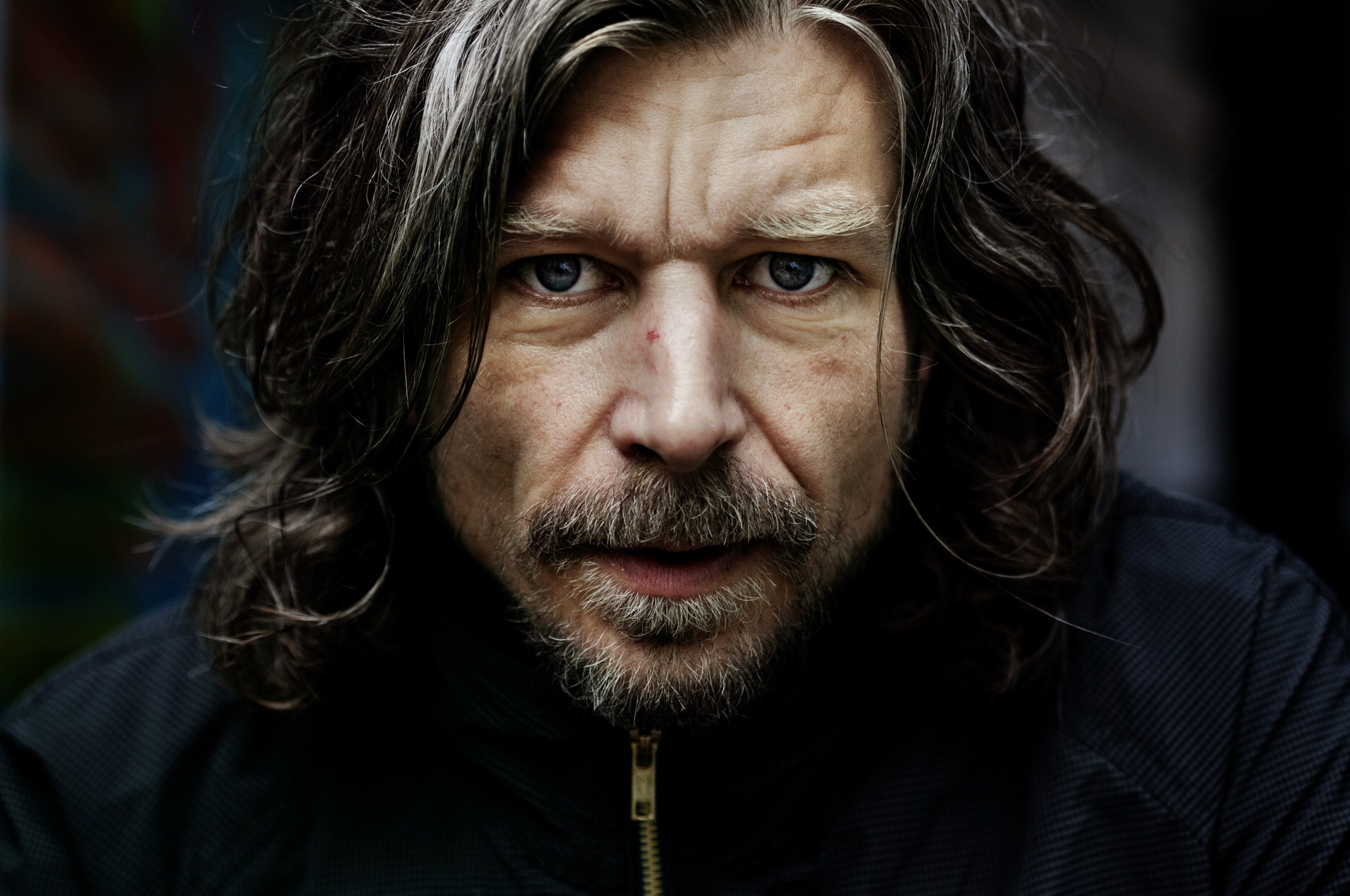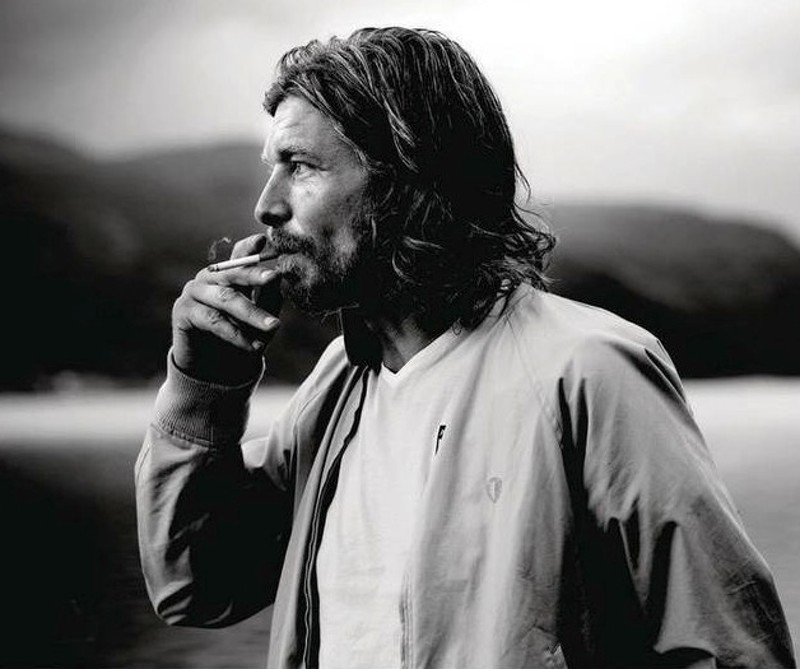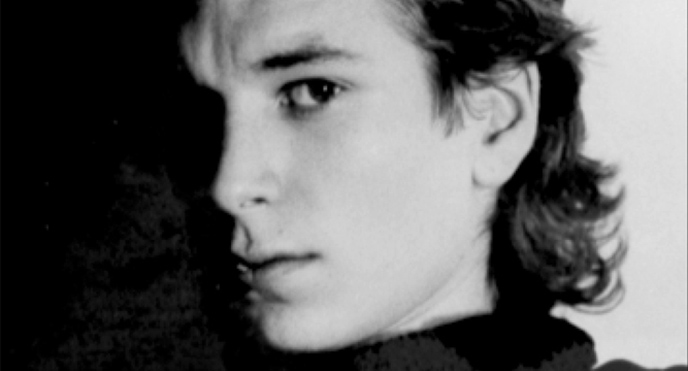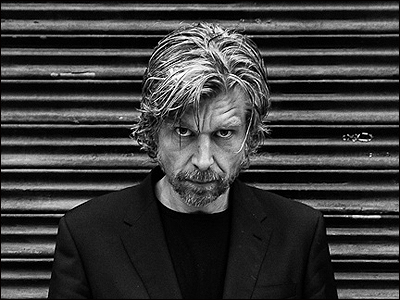My Struggle, vol. 3: Ari M. Brostoff, August 1 (Guest Post)
New Haven, CT
Dear contemporaries,
Reading your posts along with Knausgaard's knovels over the past few weeks, I've been particularly grateful for two sets of questions you've asked that strike me as essential entry points into this work and yet absent from much of the other kriticism I've read. (Words will now be spelled without extra K's until further knotice.) The first line of inquiry regards the scope of Knausgaard's "I," the politics of that scope, and our relationship to the above: do these books recognize the limits of the position from which they speak? The second asks how seriously we ought to take My Struggle, the heft of which has perhaps veiled from us its total goofiness. As Sarah put it most directly: is Knausgaard kidding? I want to develop here some thoughts about how these questions connect, by exploring a variation on each: one regarding the relationship between authorship, nation, and violence under late capitalism, the other asking, Is Karl Ove Knausgaard Tommy Wiseau? Let us begin with the second question.
For those unfamiliar, Wiseau is a filmmaker best known for his 2003 independent feature The Room, a movie which devotees claim may be the worst ever made. Wiseau's background is shrouded in mystery—no one knows quite when he was born or where he is from—but it seems that in the late 1970s he made his way from the Eastern Bloc to San Francisco, where he prospered in the schlock business selling pleather jackets and toy birds. Eventually he wrote, directed, starred in, and self-financed The Room, a melodrama in which he plays Johnny, a sweet, hapless banker driven to despair by an affair between his fiancé, Lisa, and his best friend, Mark. The film is a triumph of wooden acting, incoherent plot, and unaccountable cinematography; even San Francisco, glued together with stock images shot at random times of day, cannot play itself properly. Wiseau's extensive publicity campaign promoted him as an heir to Tennessee Williams, but could not spell the playwright's name. After a disastrous first run, Hollywood scenesters adopted the film, and it has been a favorite midnight movie ever since.
The Room and its appeal are partly legible in terms of a familiar mode of camp: it is a badly executed genre production that aspires to the realm of art, thus missing the mark on both accounts. But this description only suggests the film's quality of overreach, whereas what is really striking is its quality of underreach: an eventfulness we would expect to inhere given certain conditions simply fails to appear. Go up to the roof at Johnny's party and someone will be dangled over the edge as violins soar, but go downstairs and conversation will resemble the bland, expository dialogue one might find in a foreign language textbook. As in such a textbook, much of the film consists of characters benignly greeting each other. "Hi, babe!" Johnny greets Lisa. "Oh, hi, Denny," he welcomes a friend. "Bye, doggie," he says when taking leave of a canine. The literalness of the language keeps the raciness of the action almost perversely innocent. If a character plans a rendezvous, he says so. "I've got to go see Michelle in a little bit." Still confused? "To make out with her."

The Room sounds like a foreign-language textbook because, in a sense, it is one. Wiseau, whose looks and accent have often been compared to Count Dracula's, presents a visage of pure foreignness, an archaic whiteness from an archaic Europe, among his all-American castmates. But one would never know this from looking at the film's script. Botched translationese binds Johnny and his pals together in a common language. In the film's assimilationist imaginary, the immigrant will become one of the native-born, if only he can master their social and linguistic conventions. The film's dogged pursuit of these conventions, both plodding and off-kilter, is its source of risibility but also its pathos, because by movie's end it becomes clear that for Johnny alone is this pursuit an end in itself, not a point of departure for lust or money. Lisa can continually torture him with the improbable assurance that "everything will be all right" because she knows it's all he wants. Gun to his head, Johnny flashes back in the movie's final scene to his tormentor cackling at him: "It'll be fine."It was the constant repetition of greetings that first alerted me to the subterranean connection between Knausgaard and Wiseau. Here, from Book 2, is a synopsis of K's first date with Linda, the woman he will marry:
"Hi," she said.
"Hi," I said.
....
"Hi," she repeated.
"Hi," I said (180).
This exchange does not merely represent a lapse into the inarticulacy of desire, or a sign of Karl Ove's hesitancy in Swedish. It's just how Knausgaard's characters talk, whether they are addressing a superior or an inferior, friend or foe, a creature capable of verbal response or one who cannot speak. Just as Wiseau does not seem to think it beneath the level of cinematic relevance for his alter ego to address a dog, Knausgaard dignifies the kind of one-sided conversation adults have with babies.
"I'm going to change you now," I said. "It's important that you lie still. Have you got that?"
I lifted her and threw her again.
"Have you got that, you little troll?" (Book 2, 402-3).
Everyone in Karl Ove's Scandinavia shares a basic level of social membership; everyone has "got it." Everyone knows the rules and when they change, everyone catches on. Indeed, if "it'll be fine" is the ideologeme that, in The Room, underscores just how far things are from being fine for Johnny, in My Struggle it is K who aggravates his partner with this refrain. When Linda worries about having another breakdown, K knows "she would be fine" (Book 2, 275). When she feels at sea after getting pregnant, he knows that "[e]verything would fall into place" (284). When complications arise later in the pregnancy, he's "sure of it": "Everything's fine" (323). And at some point in the trajectory of this claim's hypnotic repetition, I became convinced he was right. For this American reader, My Struggle sometimes took on the aspect of utopian science fiction. Everyone in K's adult life seems to have health care and a secure, low-stress day job. Even for Linda—and far more so, of course, for Karl Ove—childcare and forms of reproductive labor pose existential problems (will it get in the way of my art?) rather than questions of survival. Characters experience different levels of happiness and success and apartment size, however defined, and there are specimens of truly damaged life, most notably K's father. But in a basic sense, what remains of European social democracy seems in these books to be chugging along.
Perhaps it was in light of this hypnotism that, in contrast with Omari, I read the dominant note of Book 3—which narratively though not chronologically takes place with the knowledge of K's adult successes already in mind—as marked more deeply by euphoria than trauma. Though it takes place, relative to Book 2, in the more turbulent climes of Norway and puberty, Book 3 narrates what I would argue are two remarkably smooth transitions: of Knausgaard's native country from a largely rural, traditional society to a centrally-planned managerial one, and of K from childhood to adolescence. Norway in the Seventies is free of the past, full of "spring evenings" suffused with "modern feelings, with no other history than our own," and yet still able to reveal the "immense antiquity" of "air and water, earth and rock" beneath the new (202-203). K's parents grew up in the villages where their ancestors did, but like the rest of their generation, they followed the current of "a revolution...without the usual violence and irrationality of revolutions," attending university and moving away to start a family simply "as a matter of course" (5-6). K's childhood is not without struggle: he has a violent, authoritarian father; a precocity and arrogance that sometimes isolates him; a perceived effeminacy that gets him taunted as a "jessie." But growing up cradled by the gentlest of modernizing processes, K sketches a youth characterized to a remarkable extent by fitting in. With every transition—a new school, burgeoning sexuality—the idylls of early childhood threaten to give way to alienation; but adjustment is possible, and he adjusts.
The aesthetics of social cohesion here often inhere in the adventure-and-consequence didactics of corny kids' books from before the subtler innovations of YA. The volume proceeds largely through incidents in which young K is reprimanded for cruel or selfish behavior and explodes in hysterics of shame, then almost immediately resolves into chastened gratitude for lessons learned. "Oh, no. The fire was burning out of control" perpetually gives way to "'Sorry, Mom,' I wept. 'I'll never do it again'" (416, 225). At other times, there is no lag at all between K's defeats and his euphoric reintegration into the scene of his rejection. After months of double dating two girls in their class, Karl Ove and his best friend Geir discover that they have been replaced by another bromantic duo from up the road. K isn't happy, but he is, in a sense, thrilled:
What was the difference between them and us?
There was almost no difference! (205)
In Knausgaard's placid national allegory, an almost absurdly ordinary language holds together a homogenous world that, if not the best of all possible, is doing just fine. Reckoning with this placidity is central to K's struggle. Our narrator imagines himself as a "furious nineteenth-century man" trapped in the body of a "modern and feminized" one, who finds no meaning or joy in "[e]veryday life, with its duties and routines" (Book 1, 90, 67). He fantasizes constantly about abandoning his family for a lonely island in which, as in an updated version of his beloved Robinson Crusoe, his writing will re-found the national spirit by radically separating it from the social. This fury and this fantasy ground his flirtation with a reactionary politics that decries the "anti-passionate Europe" erected in the wake of World War II, which attempted to stamp out the embers of fascism by reimagining the continent as a network of united, universalizing welfare states. Yet My Struggle's Roominess, its decision to take the unbearable sameness of postwar Scandinavian being as a cause for celebration, undercuts this flirtation at the level of style. If Wiseau's language bespeaks an American dream in which outsider becomes insider through the exaggeration of normalcy, Knausgaard's redeems the conventionality of contemporary Europe by exaggerating it to the point that it becomes strange to itself. Call it the EU sublime.
In 2011, a Norwegian man named Anders Behring Breivik killed 77 people, many of them children at a Labour Party summer camp on the Norwegian island of Utøya; Knausgaard was in the process of finishing My Struggle and devoted much of the work's final, still-untranslated volume to an analysis of this event. In essays and interviews, he has described the significance and horror of Breivik's act as representing the mutation of "war culture"—the belief in an authoritarian society that must be defended, the soldier as hero who must defend it, the dehumanized enemy killable without compunction—away from any necessary embeddedness in military organization and other disciplinary structures. Like many of the mass shooters who appear now almost daily around the world, Breivik was a fascist who needed no Führer because, Knausgaard argued in the New Yorker, he already lived in a simulacrum in which images of power had become real and other humans had become images. The killer took pictures of himself in a homemade military uniform, pledged allegiance to "a large organization, of which he claimed to be a prominent member but which does not exist," played World of Warcraft constantly, listened to the Lord of the Rings soundtrack on headphones as he carried out his murders, and, of course, laid out his ideas in a manifesto. In prison, Breivik has remained committed to his writing. The crime itself, then, for Knausgaard, is the logical culmination of a desperate attempt at authorship, a forcible attempt to draw others into the world of his own making. The mass shooter follows the fiction writer's dictum: he makes the unreal real in order "to 'show' us."
The Italian Marxist theorist Franco Berardi offers what we might read as a periodizing schema for the connection Knausgaard draws between the compulsion toward authorship and the rise of the mass killer. The killer, for Berardi, acts out a schizogenic character that power developed beginning in the late 1970s—the moment of My Struggle, Book 3—marked by simultaneous commitments to "destroying authoritativeness" through the deterritorialization of value wrought by financial capitalism, and "reclaiming authority" via cultural conservatism's attempt to restore the law of the father after its challenge from feminism and the 1960s social movements. Breivik's manifesto, 2083: A European Declaration of Independence, bemoans the advent of a post-1960s "cultural Marxism" that has "Islamized" and "feminized" Europe, and which, through the agency of his own "super-liberal family," has feminized him as well (qtd in Heroes 95-105). In the absence of an authoritative way to restore patriarchal authority, Berardi argues, he commits a crime that amounts to a random act of authorship, an attempt to break down the wall between spectator and spectacle, life and art, by any means necessary (Heroes 2). The killer betrays, then, the condition of "permanent war" at the end of the process in which capitalism has taken immaterial labor as its dominant force of production (104). What Berardi elsewhere calls "the soul"—language in its capacity to create a "relation to the other"—is shattered by this process (Soul 115). To speak is to work, or, in the case of the shooter, who aspires to the high-stakes value production of the financial agent, to win, not to address a listener. Or, as Knausgaard has noted of 2083—and a notorious predecessor, Hitler's Mein Kampf—"there is an 'I,' and a 'we,' but no 'you.'"For Knausgaard, this gives rise to an aesthetic problem: what would it look like, under these conditions, to write a book that does not obey the logic of the killer's manifesto? K, too, is horrified at contemporary literary production generalized to the point that "[w]herever you turned you saw fiction," a simulacrum hovering at a fixed distance from the real, an imitation of life that gains its awful power from the fact that it is "all the same." The only literature able to produce a break from this circuit, reintroducing otherness into the scene of reading, would have the status of the diary or essay, stripped of everything but "a voice, the voice of your own personality, a life, a face, a gaze you could meet" (Book 2, 561-562). But he also expresses an acute awareness that his voice, his life, his face, betrays "almost no difference" from those around him. His struggle, then, is to introduce alterity into the act of address—to posit a "you," a reader able to receive and be changed by the unfamiliar—without locating the grounds of this otherness in a false claim to social dislocation. His dopey style is a way of representing a world in which Knausgaard belongs whether or not he feels like he does.
In his guise as furious nineteenth-century man, Knausgaard dreams of trading his life for "a room" where he can "read in earnest, not contemporary literature but literature of the highest quality, and then write as if my life depended on it. For twenty years if need be" (Book 2, 520). But this, he suggests, is the path to literary homicide, and instead the book is a long prelude, as Ben Lerner puts it, to "literary suicide": Book 6, Knausgaard has told interviewers, will end with the announcement that "I'm so glad I'm no longer an author." The twist, then, is that Knausgaard's ethical and, in the negative, political project is predicated on a planned obsolescence. The EU sublime turns out to be a kind of literary accelerationism: it will restore art to the condition of life by driving the aesthetic juggernaut off a cliff, hoping to land in the awesomely boring precincts of modern Scandinavian livability. Whether or not this will turn out be the case outside the world of My Struggle—there are indications that it will not—it is a fascinating conceit: run down the clock in the novel factory, eat your crab and Jell-O, and try to enjoy the remains of social democracy.
The end of Book 3, however, may mark the acknowledgment of a kind of outer limit to this project. Throughout much of the volume, young K's sense of living in an orderly world, and a world that he is entitled to order, are nowhere clearer than in his ideas about girls and sex. Feelings of desire as well as the objects they attach to, girls at school and women in the porn he avidly consumes, exist within a single catalogue, a libidinal spreadsheet shared and continually updated by K and his male friends. "Never, later in life, have I had my finger on the pulse the way I had then with the girls living around us in those years," the adult K reflects. "Later I may have doubted whether Svein Jarvoll's Journey to Australia was a good or a bad novel, or whether Hermann Broch was a better writer than Robert Musil, but I was never ever in any doubt that Lene was a good-looking girl and that she was in quite a different league from, for example, Siv" (435-436). K is sometimes punished for Wiseauean lapses in which he betrays too readily that the conventionalizing of desire is an end unto itself: Kajsa dumps him when he times his makeout session with her in an attempt to beat Tor. But he is largely encouraged to see these attitudes as normal because they are, precisely, normal.
Yet at the volume's close, K, flipping through a history book, stumbles upon a picture of "a naked woman...so thin her hips protruded like bowls," bunk beds lined up behind her. On the next page he finds a picture of a mass grave in which "the legs were only legs, the hands were only hands, the noses were only noses, the mouths were only mouths." He becomes nauseous and confused; the body parts flung into the earth in the photograph become mixed with the terrain of the schoolyard outside the window—"[t]he green grass, the yellow dandelions"—and the body parts of the girls who play there—"Siv's bare breasts, Kjersti's fat thighs." Geir expresses disgust, but K clings to the fantasy of innocent objectification: "'What's the matter?' I said. 'She's naked, isn't she?'" His friend is forced to explain that the woman "looks as if she's dead." After episode upon episode in which thoughtlessness gives way to pedagogical shame, this is where we would expect K's tears, self-censure, newfound conscientiousness to begin. But the scene ends simply with his corroboration of Geir's view; if it has anything to do with him, or with history, he does not say (445-446). The photograph returns not in conscious reflection but in a restaging in the book's penultimate scene, when a class party erupts into an "early puberty orgy" among a schoolmate's lilac bushes. In this spring awakening, "[t]he hierarchy the girls had been placed in...had no significance," and K is permitted to touch an undifferentiated mass of "soft, white breasts," "dark, erect nipples," thighs, legs (450). In its proximity to the unidentified Holocaust document, it conjures not Proust's young girls in flower but Mirbeau's torture garden, bodies and plants merged in pastoral mass death.Writ large, Knausgaard's project describes the obliteration of silence under late capitalism by driving the work of this obliteration to its manic logical conclusion. He shows us a world governed not only by the law that a transparent consciousness must be produced through its interminable confession, but by the subject's mandate to play his own confessor, scrivener of his entry in the book of life. The silent appearance of the other whose gaze young K cannot meet or incorporate back into himself, the dead Jewish woman in the subconscious of the Nordic youth orgy, suggests that Knausgaard takes seriously what he can't do via his strategic solipsism, which is to animate within the text the kinds of relation to alterity that that solipsism excludes. In its acquiescence to the pleasures of anti-passionate Europe, it risks naturalizing the violence that has shadowed the EU's vision, in its projection of formal equality onto a system in which some national and individual bodies have remained more equal than others. Young K misrecognizes Nazi genocide, with its murderous hatred of racialized otherness, because he does not recognize the violence—directed, here, at gendered otherness—in his delight that his own work of differentiation, the erection of hierarchy, can ultimately be transformed into homogenization, or its stripping away. In pointing us toward this failure, Knausgaard suggests that the author knows more than his fictional surrogate. Yet the coordinates of his project dictate that such a moment be thrown into relief by hundreds of pages in which the reader must do the pointing herself, generating the silences produced by the endless unspooling of talk. This is what Knausgaard means, I think, when he describes My Struggle as "a secondary book" rather than a "thing itself" like the work of Paul Celan, who could no longer understand himself as the subject of his own poetic tongue, German, after the Holocaust, and began to write in an invented language in which "every word seems to be created for the first time." This humility is the other side of My Struggle's comic audacity; together, they give the book its ethical force.
- Ari
Works Cited
Berardi, Franco "Bifo." Heroes. New York: Verso, 2015.
Berardi, Franco "Bifo." The Soul at Work. Los Angeles: Semiotext(e), 2009.
ALSO IN THIS SERIES:
The Slow Burn, v.2: An Introduction
My Struggle, vol. 1: Cecily, June 6
My Struggle, vol. 1: Diana, June 9
My Struggle, vol. 1: Omari, June 14
My Struggle, vol. 1: Dan, June 17
My Struggle, vol. 2: Omari, June 24
My Struggle, vol. 2: Cecily, July 1
My Struggle, vol. 2: Sarah Chihaya, July 5
My Struggle, vol. 2: Dan, July 12
My Struggle, vol. 2: Diana, July 16
My Struggle, vol. 2: Jess Arndt, July 18
My Struggle, vol. 3: Omari, July 25
My Struggle, vol. 3: Ari M. Brostoff, August 1
My Struggle, vol. 3: Dan, August 4
My Struggle, vol. 3: Jacob Brogan, August 8
My Struggle, vol. 3: Diana, August 12
My Struggle, vol. 4: Katherine Hill, August 25
My Struggle, vol. 4: Omari, September 1
My Struggle, vol. 4: Dan, September 2
My Struggle, vol. 4: Diana, September 15
My Struggle, vol. 5: Omari, September 27
My Struggle, vol. 5: Diana, October 3
My Struggle, vol. 5: Dan, October 13





